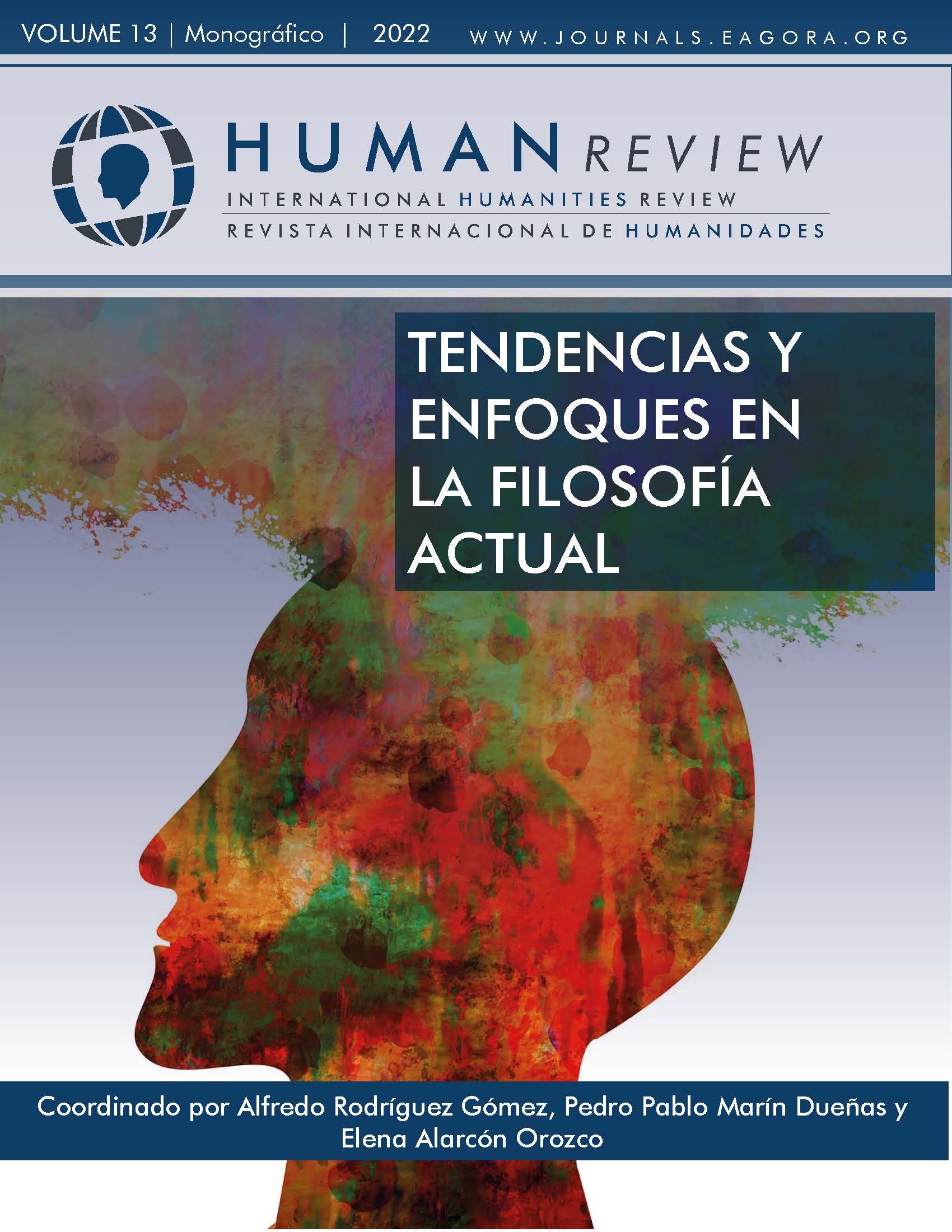Links between technology and philosophy: The specific case of the metaverse ecosystem
Philosophical categorization of technological terms from the Summa Theologica of St. Thomas
DOI:
https://doi.org/10.37467/revhuman.v11.4070Keywords:
Digital Society, Metaverse, Digital Humanities, Philosophy of Technology, Thomism, Artificial IntelligenceAbstract
The development of technology and artificial intelligence has been raising ethical and anthropological questions for years. The Summa Theologica of St. Thomas allows us to categorize technological terms and establish ontologies in a philosophical key. Using the methodology of the Summa, the term “metaverse” and its ethical implications will be studied here. The article also provides a systematic review of scientific literature to elaborate a map of knowledge from a qualitative and quantitative point of view that makes visible the impact of this emerging terminology in research.
References
Agejas, J.A. (2020). Seréis como dioses. Thibón, Gustave. Relectiones, 7, 139-141.
Alzheimer’s Research UK (2020). A Walk Through Dementia. http://www.awalkthroughdementia.org
Ayiter, E. (2019). Spatial poetics, place, non-place and storyworlds: intimate spaces for metaverse avatars. Technoetic Arts, 17 (1-2) 155-169.
Barraca Mairal, J. (2021). Humanismo digital y uso prudente de las TICS en lo inter-personal. Human Review, international Humanities Review, 10 (1) 87-97 a. https://journals.gkacademics.com/revHUMAN/article/view/3111/1778
Bolger, R.K. (2021). Finding Wholes in the Metaverse: Posthuman Mystics as Agents of Evolutionary contextualization. Religions, 12 (768).
Campbell, J. (2015). El héroe de las mil caras: Psicoanálisis del mito. Fondo de Cultura.
Cheek, J. (2021). Big data, Thick Data, Digital Transformation, and the Fourth Industrial Revolution: Why Qualitative Inquiry is more Relevant than Ever. Routledge.
Cornerstone. (2020). Cornerstone VR Programme Case Studies. April 2020. https://v.fastcdn.co/u/2d109d62/50664650-0-5.-Case-studies---Co.pdf
Engelhardt, H.T. (1995). Los fundamentos de la bioética. Paidos.
Kim, W. C., & Mauborgne, R. A. (2015). Blue Ocean Strategy, Expanded Edition: How to Create Uncontested Market Space and Make the Competition Irrelevant.
Lawtoo, N. (2021). Black Mirrors: Reflecting (on) Hypermimesis. Philosophy Today, 65 (3) 523-547.
https://www.pdcnet.org/philtoday/content/philtoday_2021_0065_0003_0523_0547
Lin, Y., Shejiao, D. (2019). Ethics and risks between human and robotic interaction. Interaction Studies, (20) 1 134-147.https://www.jbe-platform.com/content/journals/10.1075/is.18009.yu
Lisberger, S. (1982). Tron. Película.
anna, R., Rajakishore, N. (2021). Kantian Moral Agency and the Ethics of Artificial Intelligence. Problemos. Vol. 100, 139-151.
Madary, M., Metzingier, T.K. (2016). Real virtuality: A code of ethical conduct, recommendations for good scientific practice and the consumers of VR-technology. Frontiers in Robotics and AI.
Morte Ferrer, R. (2021). Valoraciones éticas para una inteligencia artificial adecuada a la privacidad. ARBOR: Ciencia, pensamiento y cultura. Vol. 197-802.
Munk, A., Olesen, A., Jacomy, M. (2022). The Thick Machine: Anthropological AI between explanation and explication. Big Data and society, 9 (1).
Murray, J. (2020). Virtual / reality: How to Tell the Difference. Journal of Visual Culture, 19 (1) 11-27.
https://journals.sagepub.com/doi/pdf/10.1177/1470412920906253
Neiman, N. R., Falkson, S. R., Rodriguez, S. T., Wang, E. Y., Hemphill, S. F., Khoury, M. E., Kist, M. N., Jackson, C. D., & Caruso, T. J. (2022). Quantifying virtual reality pain modulation in healthy volunteers: A randomized, crossover study. Journal of Clinical Anesthesia, 80, 110876. https://doi.org/10.1016/j.jclinane.2022.110876
Pastor, J. (2022, mayo 3). Meta prepara cuatro gafas de realidad virtual y aumentada: Serán mejores pero también más caras que las Quest 2. Xataka. https://bit.ly/3ReIgj6
Rospigliosi, P. (2022). Metaverse or Simulacra? Roblox, Minecraft, Meta and the turn to virtual reality for education, socialisation and work. Interactive learning Environments, 30 (1) 1-3.
https://www.tandfonline.com/doi/full/10.1080/10494820.2022.2022899
Stephenson, N. (1992). Snow Crash. Bantam Books.
Stephenson, N. (2011). Snow Crash. Penguin.
Tillería Aqueveque, L. (2022). Transhumanismo e inteligencia artificial: el problema de un límite ontológico. Griot, Revista de Filosofía, 22 (1) 59-67. https://www.redalyc.org/articulo.oa?id=576670028006
Turner, V. (2016) Liminality and Communitas. https://bit.ly/3SafssT
Urquhart, L., Reedman-Flint, D., Leesakul, N. (2019). Responsible domestic robotics exploring ethical implications of robots in home. Journal of Information Communication & Ethics in Society. (17) 2 246-272.
Vaccari, A. (2014). La posthumanidad como un bien objetivo: los peligros del futurismo en el debate sobre la optimización genética humana. Acta Bioethica, 20 (2) 237-245.
Valera, S., Valdés, P., Viñas, S. (2021). NFT and digital art: new possibilities for the consumption, dissemination and preservation of contemporary works of art. Artnodes, 21.
Wang, F., Qin, R., Wang, X. (2022). MetaSocieties in Metaverse: MetaEconomics and MetaManagement for MetaEnterprises and MetaCities. IEEE Transactions on Computational Social Systems. 9 (1) 2-7.
Referencias de obras clásicas:
De Aquino, S. Tomás (2001). Suma Teológica. Biblioteca de Autores Cristianos.
Downloads
Published
How to Cite
Issue
Section
License
Those authors who publish in this journal accept the following terms:
- Authors will keep the moral right of the work and they will transfer the commercial rights.
- After 1 year from publication, the work shall thereafter be open access online on our website, but will retain copyright.
- In the event that the authors wish to assign an Creative Commons (CC) license, they may request it by writing to publishing@eagora.org









